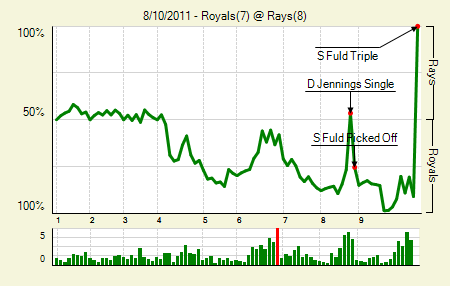It Took This Long to Release Davies?
The Royals officially released Kyle Davies earlier this week following poor performances in parts of five seasons. Acquired from the Braves in exchange for half of Octavio Dotel’s 2007 season, Davies seemed like a solid return. He threw hard, complemented the heater with a decent yet underwhelming curve, and was not yet eligible for arbitration. In other words, he was exactly the type of project the Royals were looking for. While the trade itself was good for the team at the time, Davies has arguably been the worst regular starter in baseball over the last five seasons. His presence on the Royals roster this season, as well as his career numbers, invites discussion regarding tendering contracts, building rosters and large gaps between ERA and estimators.
Since debuting in 2005, Davies has thrown 768 innings with below average peripherals, poor controllable skill marks and abysmal run prevention rates. He has a career 6.4 K/9 and 4.3 BB/9, and a 39 percent groundball rate. He doesn’t miss many bats, exhibits poor control and struggles to keep the ball on the ground. The anti-Halladay, if you will. He stranded runners at a meager 67 percent clip, which hurt mightily given his 1.62 WHIP and .318 batting average on balls in play. Plenty got on and plenty came around to score, translating to a 5.59 ERA. Though his xFIP and SIERA were a bit kinder — they are identical at 4.91 — they didn’t exactly vouch for his performance.
Since 2007, the year he was traded to the Royals, there are 83 pitchers to throw 600+ innings. Davies has the sixth lowest WAR (5.6), the worst ERA (5.40), third worst SIERA (4.87), fifth highest BABIP (.313), second worst WHIP (1.58) and second worst strand rate (66.8 percent). No matter how one slices it, Davies has been the, or one of the, worst starting pitchers in baseball. Read the rest of this entry »




